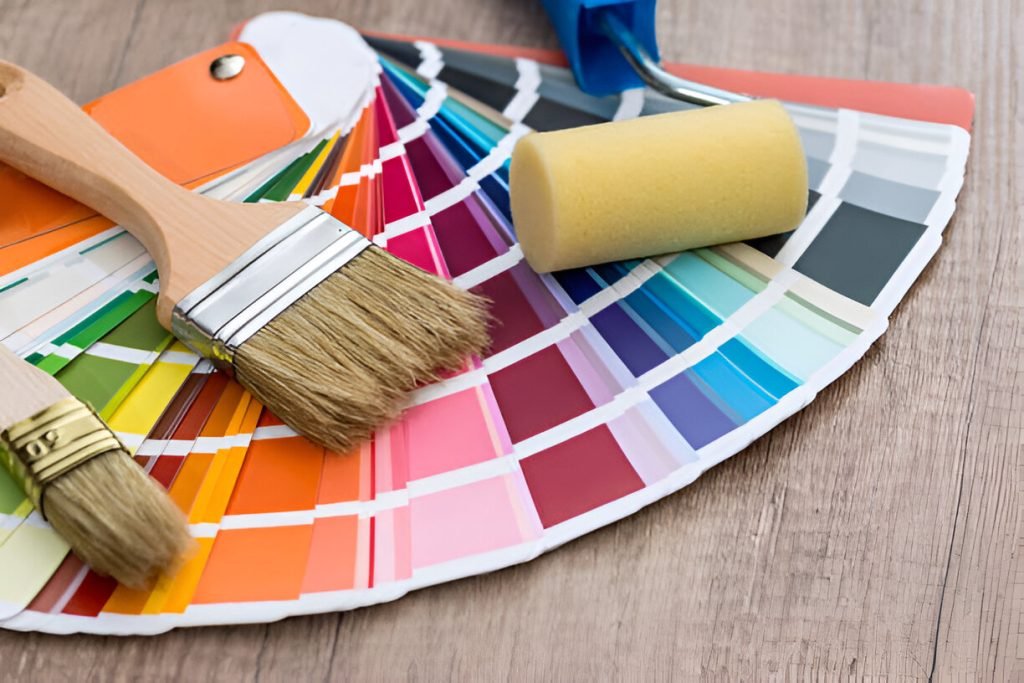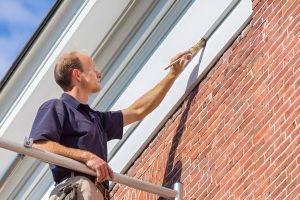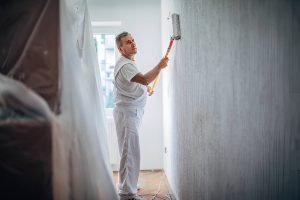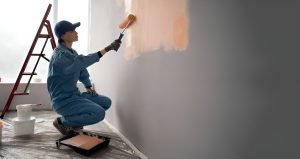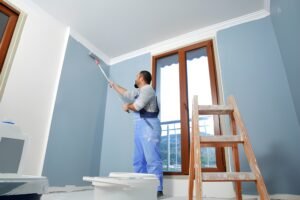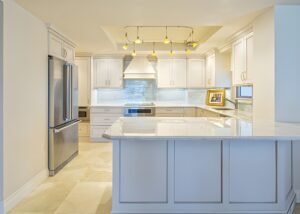Painting your home can dramatically enhance curb appeal, protect it from the elements, and increase property value. However, choosing the wrong season in Surprise, AZ, can lead to peeling, uneven finishes, and wasted effort.
Many homeowners rush into painting without considering temperature, humidity, or sunlight, only to face frustration and costly touch-ups. Following a comprehensive exterior painting guide and knowing the best painting season in Surprise, AZ, ensures your project is smooth, long-lasting, and visually appealing. From understanding the ideal weather for painting in Surprise, AZ, to applying seasonal painting tips, proper planning makes all the difference.
Why Timing Matters for Exterior Painting
The timing of your painting project significantly impacts how paint adheres, dries, and performs over time. Extreme heat, high humidity, or direct sunlight in Surprise, AZ, can cause paint to crack, peel, or fade prematurely. By choosing the best time to paint house and following a seasonal strategy, you ensure proper curing and maximize the lifespan of your investment.
Key points:
- Temperature and humidity directly affect drying and adhesion
- Proper timing reduces risks of blistering, cracking, or uneven surfaces
- Planning ahead improves efficiency and overall project quality
Best Seasons for Painting in Surprise, AZ
1. Fall and Early Winter
Fall and early winter provide moderate temperatures and lower humidity, making them ideal for exterior painting. Paint dries evenly, bonds well, and is less likely to peel. These months also allow for comfortable working conditions, enabling painters to achieve high-quality results.
Seasonal painting tips for fall/early winter:
- Paint during mid-morning or late afternoon for even drying
- Focus on shaded areas to prevent over-drying
- Clean, sand, and prime surfaces before painting
2. Late Winter and Early Spring
Late winter and early spring also offer mild conditions perfect for exterior painting. These months are ideal for priming and applying multiple coats, as paint can cure properly without interference from frost or rain.
Tips for late winter/early spring painting:
- Schedule projects on dry, calm days
- Avoid early morning frost or dew
- Use high-quality primers for better adhesion and durability
3. Summer Painting Considerations
While summer may seem convenient, high heat and strong sunlight can negatively affect paint performance. Paint applied during peak temperatures can dry too fast, causing uneven surfaces, brush marks, and cracks. If summer painting is unavoidable, choose early mornings or late afternoons when conditions are cooler.
Summer painting tips:
- Avoid direct sun during the hottest hours
- Use UV-resistant and heat-tolerant paint formulas
- Stay hydrated and follow safety precautions for outdoor work
Weather Conditions to Avoid
1. Rain and Moisture
Rain or high humidity during painting can ruin freshly applied paint, causing bubbling, peeling, and uneven finishes. Checking forecasts before starting is essential to avoid setbacks and extra costs.
Tips to prevent weather-related issues:
- Check a 5–7 day forecast before scheduling
- Postpone painting if rain is expected
- Cover unfinished surfaces with tarps if necessary
2. Extreme Heat or Cold
Painting when temperatures are too high or too low affects the curing process. Paint may not adhere properly or could crack prematurely, shortening its lifespan.
Tips to avoid temperature-related problems:
- Choose mild, dry days with temperatures between 50°F and 85°F
- Avoid painting on windy days to reduce dust sticking to wet paint
- Keep surfaces shaded during strong sunlight
Key Considerations for Successful Exterior Painting
To achieve a professional, long-lasting finish, homeowners must consider several factors beyond seasonal timing. These elements directly impact the durability, appearance, and overall performance of the paint.
Checklist for success:
- Temperature: 50°F–85°F (10°C–27°C) for optimal drying
- Humidity: Low levels ensure proper curing
- Sunlight: Avoid direct sunlight during peak hours
- Surface Preparation: Clean, dry, and primed surfaces improve adhesion
- Paint Quality: Use weather-resistant, UV-protected paints
Tips for a Long-Lasting Paint Job
Following seasonal painting tips can greatly extend the life of your exterior paint. Proper planning, preparation, and execution make a noticeable difference.
Recommendations:
- Schedule painting during the best painting season in Surprise AZ
- Use professional tools for smooth and even application
- Maintain painted surfaces with routine cleaning
- Plan touch-ups during mild weather for consistency
- Hire professional painters for large or complex areas
Conclusion: Achieve a Long-Lasting, Beautiful Paint Finish
Choosing the ideal weather for painting in Surprise AZ is essential for a durable and visually appealing exterior finish. By following this exterior painting guide and applying seasonal painting tips, homeowners can avoid mistakes, protect their investment, and enjoy a flawless paint job. Painting during the best time to paint a house ensures long-lasting results, even in Arizona’s unique climate.
Ready to refresh your home’s exterior?
Contact our expert team for professional house painting Surprise, AZ services. We provide guidance, precision, and long-lasting results for every project, whether you’re painting during the best painting season in Surprise, AZ, or need advice on ideal weather for painting in Surprise, AZ.
Call now to schedule your consultation and get the perfect paint job!
Frequently Asked Questions
What is the best month to paint?
October to early December and February to April, when temperatures are mild and humidity is low.
How often should I paint my house in AZ?
Every 5–7 years, depending on sun exposure, paint quality, and weather.
Is it better to paint in the summer or winter?
Fall, winter, or early spring is best; summer heat can cause cracking.
How long does paint last in Arizona?
Exterior paint usually lasts 5–7 years with proper prep and quality paint.
How many coats of paint does a house need?
Typically 2 coats, with primer if painting new or repaired surfaces.

